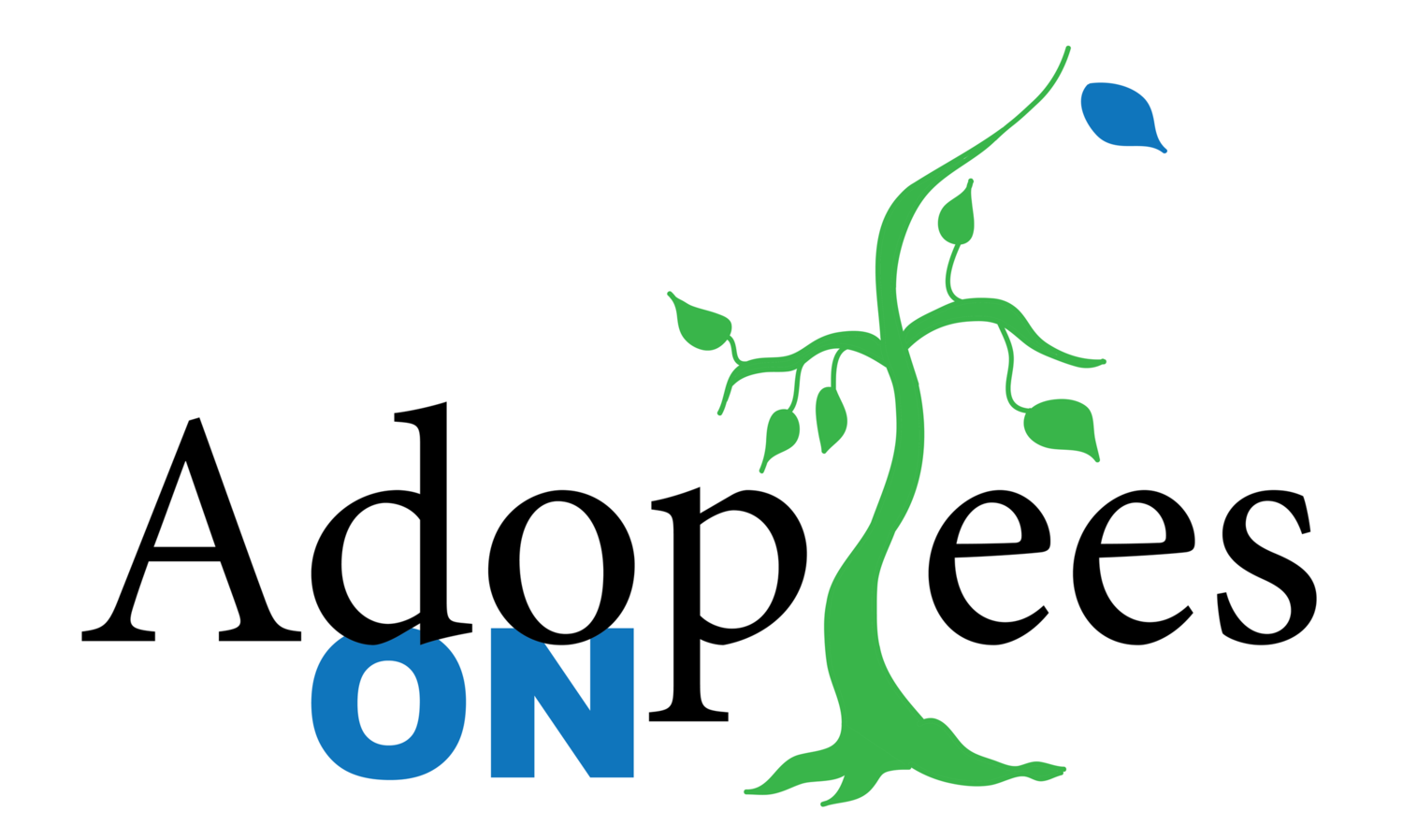Adoptee Anger with Pam Cordano, MFT
/Interviewee: Pam Cordano, MFT - Interviewer: Haley Radke - Author: Shantu Ellis
As Adoptees, we have access to a complex spectrum of emotions. And because our experiences are all so unique, those emotions can come out in several ways: some subtle, and others more extreme.
A common emotion attached to the Adoptee experience is anger. There’s even an antiquated stereotype of Adoptees being short-fused, defiant, or rebellious: the Adopted Child Syndrome. It’s the basis for many Hollywood plotlines, from Problem Child to Problem Child 3: Junior in Love (it’s real; look it up). The recurring theme is this: the adopted child’s behaviour is often the problem that needs correcting. Not the practice of separating families, the lack of support for parents at risk of relinquishing their babies, or the industries that benefit from adoption—the Adoptee is portrayed as the problem.
Ironically, the other commonly enforced narrative is that adoptions are fairytale stories, often at the compassionate hands of saviours. Whether adoption is used as a punchline, a movie trope, or to sell cars, Adoptee experiences are often displayed very publicly and in calculated ways.
That can be angering, especially when so many Adoptees’ childhoods (and often, adulthoods) are based on misdirection. Pam Cordano, MFT, is a Psychotherapist and Meaning Coach—and also an Adoptee—who says that feeling unheard, silenced, or unjustifiably debated regarding our experiences can stir up anger in a very physical form. Anger is heat—it’s energy, she says. And as with any energy, it can be directed in many ways.
Understanding anger
“Anger simply means, ‘I don’t like this,’” Pam says.
“There’s a lot for us Adoptees to not like about what’s happened to us—or how the culture is with adoption, or how the system is, or contact with our adoptive and biological families—and how we feel inside about ourselves. There’s plenty for us to not like, so there’s plenty for us to be angry about. Anger and fear are closely linked, and I guess I would then say there’s also a lot for us to be afraid of as Adoptees.”
Pam points out that anger is often considered to be a secondary emotion—a reaction to a deeper core emotion such as fear, sadness, shame, or humiliation. “Anger is at least more bolstering and can make us feel like we have some power,” she says. And while it’s often visible in its most extreme forms (such as road rage, passive-aggressive behaviour, or violence), she reminds us that anger also has a healthy component. By processing complex emotions with maturity, we allow our feelings to be expressed in more coherent, grounded, and connected ways.
The goal is to use anger as an ally to heal traumas, improve communication, fuel creativity, and inspire others. “When it’s just in our bodies as an experience, it’s not yet in the camp of ‘connected or disconnected,’ ‘grounded or ungrounded,’ the ‘adult’ part of us or the ‘child’ part of us,” Pam says. “That’s where we get to make decisions about what we do with this energy and this fury and this rising. That’s where our adult selves need to come in and make some decisions.”
This can be difficult to do. Sometimes our inner child is triggered easily, and inner children often behave like, well, children. It’s important, Pam says, to identify the source of our anger. Ask the question, ‘is this triggering the inner-child or the inner-adult in me?’ This allows us to approach our triggers and traumas maturely and process them positively, for the benefit of ourselves and the people around us.
Expressing Disconnected Anger
- Creates an environment of negative communication
- Makes people feel unheard, discounted, or neglected
- Elevates incompatibility, aggression, or violence
- Creates turmoil in the emotional core
- Creates judgment, harm, and hurt
Expressing Connected Anger
- Encourages healthy debate
- Makes people feel heard and inspired
- Heals and calms stored traumas
- Becomes integrated into the core emotional process
- Encourages social change, justice, and activism
Ways to process connected anger
Learning to express anger in a connected way takes work. Of course, finding the right therapist is recommended, but it’s not always realistic.
The key is to create a safe space to process anger in a healthy way, by confiding in a friend or trusted fellow Adoptee, writing in a journal, or even yelling and venting in a closet—any port in a storm. “We need to make space for the younger parts of us who have been either stuck or silenced or immobilized,” Pam says. “...to find expression and mobility and connection to others. That unwinding of our feelings and experiences is what’s healing.”
Pam suggests a popular method of communicating with your inner child that only requires a pen and a piece of paper:
- Write to your inner child with your dominant hand. Start with a question, such as, “How are you feeling?”
- Switch the pen to your non-dominant hand (if you’re right-handed, put the pen in your left hand), and answer the question.
- Continue the conversation by validating and asking follow-up questions with your dominant hand and answering with your non-dominant hand.
This allows you to access both the logical and emotional areas of your brain. It can reveal details and emotions that you might not be able to access by journaling with your dominant hand—and the logical side of your brain—alone. A safe space like this allows processing and expression of all emotions, including anger, in connected and grounded ways.
“We need to connect with ourselves and with others, including those parts of us, even if they’re not sophisticated and they don’t have adult, compassionate, and reasonable qualities to them,” Pam says. “We need to make space for our truest and deepest experiences—even if we think we’re being outrageous. Sometimes, those are the most fun.”
Expressing connected anger for social change
One of the most beneficial (and therapeutic) things we can do as a society is to contribute to social change. Adoptee voices can be used in many ways, through social justice movements or other forms of activist expression.
Simply searching “Adoptee rights” on social media conjures an impressive number of Adoptee activists, therapists, mentors, writers, artists, musicians, speakers, and podcasters standing in their truths and sharing their voices. And justifiably so, since the topic of adoption touches many areas of society: from immigration laws to parental rights, access to information, and human liberties. Our collective experience is much more ingrained in society and politics than many people realize.
“The truth is, it’s often difficult to have conversations about adoption with people who aren’t adopted.”
Unfortunately, debating the popular narrative that adoption is simply a positive solution can feel like rolling a boulder up a hill. And Pam has even struggled with voicing her opinion in public spaces, with friends, and with family. The truth is, it’s often difficult to have conversations about adoption with people who aren’t adopted.
“I have friends who’ve adopted babies and I would never want to hurt them,” Pam says. “This is the bind we get into; I don’t want to hurt anybody I love, and yet my truth is probably hurtful to the culture—to society’s view of adoption. It’s like I walk around zipping my mouth shut because if I say what I truly think about adoption, I’m going to hurt people, and so I have to circle my anger in on myself.” That is a hard truth and a valid reminder when challenging any accepted public opinion.
As Pam reminds us, every Adoptee has a talent, skill, or specialty that can benefit a social cause. With connected expression of anger, she hopes for a significant change in the public perception of adoption to include all perspectives and experiences.
Adoption is not a fairy tale
Ideally, all Adoptee voices and experiences would be considered in the cultural perception of adoption. Unfortunately, we know that’s not the case, and shifting perception is not a simple job. The popular narrative of adoption—which is supported by the industry that wrote it— is overrepresented with happily-ever-after storylines and saviourism. And, as Pam puts it, she’s not here to make enemies. The more we understand about our anger, the better we can process and express it in a grounded, connected way, which is an important step in a long fight that is ultimately necessary for both our community and our health.
“When we’re angry, our body is organized to take action towards something to address the anger, whether it’s a fight or drawing a line,” Pam says. “When we don’t feel we can act on our anger—when we feel like we have to keep it inside—we pay a terrible price … we’re shutting the door on any action and curling in on ourselves, and I honestly feel like it makes us sick to do that.”
Listen to this episode of the Adoptees On Podcast
















